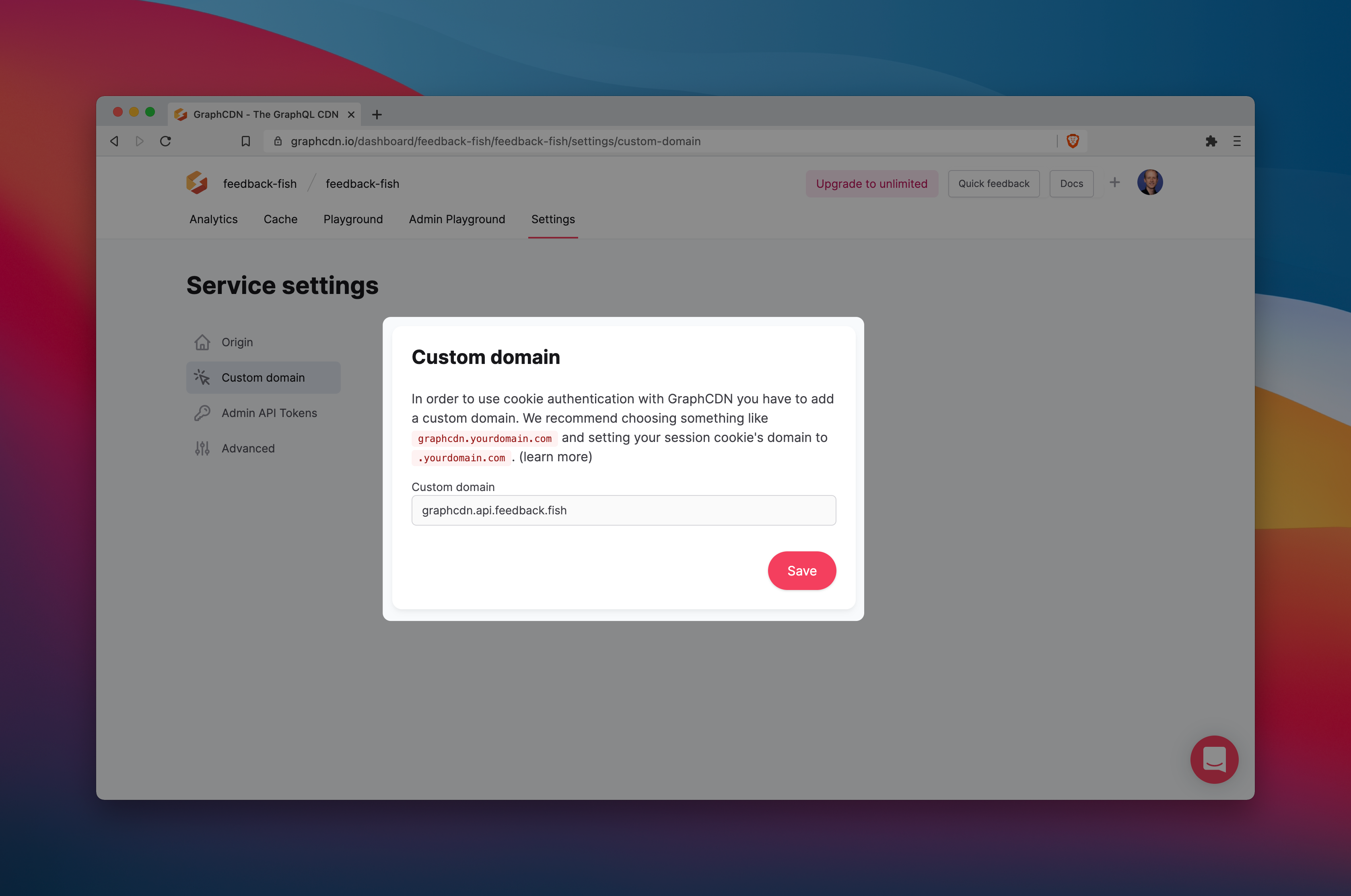CLI flow to create services
You can now create services from the CLI by running a single command and answering a handful of questions:
$ npm init graphcdn # or if you're using yarn $ yarn create graphcdn
This will do everything you need to do to get started with GraphCDN:
- Install the graphcdn CLI
- Create a graphcdn.yml file
- Push it to GraphCDN.
Custom domain support
One of our most highly requested features just landed: custom domain support! You can now assign a custom domain to your service, which can be used instead of your
Head to your service's settings, enter your preferred custom domain and follow the instructions to set the correct DNS records:

New Admin API URLs
The Admin API, which you use to purge data, has moved to a new location in order for us to make it even faster. Moving to the new location should take a handful of minutes at most: The only thing you have to do is change the URL you send requests to: instead of https://graphcdn.io/api/management/[name], send them to https://admin.graphcdn.io/[name]. That's it!
We'll keep the old path around for two months and will notify any customers still using it in a month directly.
Cache private results for public users
We had a bug where any query that had a scope set would not be cached at all for public users.
While the cache for public users should not be shared with authenticated users in that case, the query should still be cached for them. We've now resolved those issues and the caching works as it should again!
Automatic mutation invalidation
We've been dreaming of this feature ever since we first started building GraphCDN so we're very excited it's finally here!
How it works
{
"user": {
"id": 5,
"name": "Peter Pan"
}
}mutation {
editUser(id: 5, name: "Saint Peter") {
id
name
}
}Fix CORS for requests with credentials
credentials": "include" we were incorrectly returning the Access-Control-Allow-Origin header set to the wildcard *, breaking those requests.Origin request header instead!Team support

Introducing the "Unlimited" paid plan
- Your first 5M requests per month are free
- After that, it's $10 / month per 1M requests

